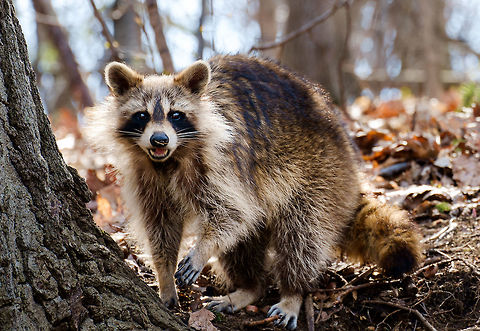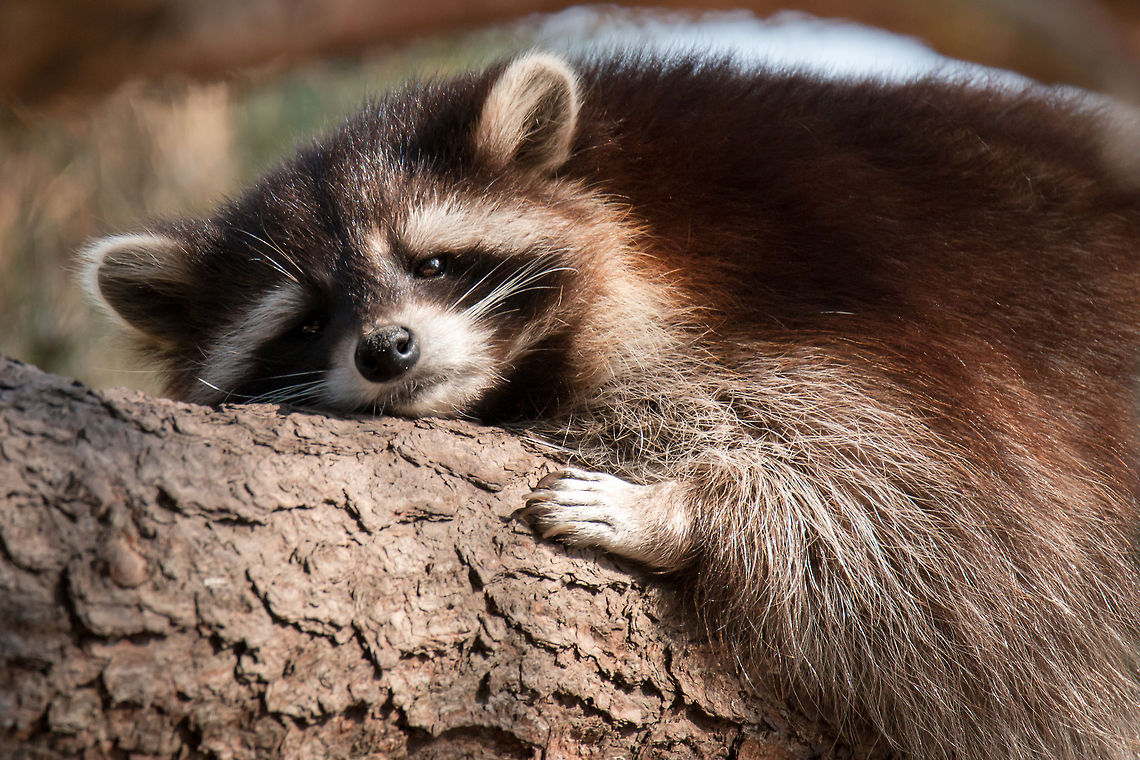
The raccoon, ''Procyon lotor'', also known as the common raccoon, North American raccoon, northern raccoon and colloquially as coon, is a medium-sized mammal native to North America. It is the largest of the procyonid family, having a body length of 40 to 70 cm and a body weight of 3.5 to 9 kg.
Similar species: Carnivorans
By Claire Hamilton
All rights reserved
Uploaded Aug 14, 2014. Captured Aug 11, 2014 14:21 in 85559 N2, South Africa.


comments (5)
Happy International Raccoon Appreciation Day! Did you know that raccoons are named for their hands? The English word “raccoon” comes from a Powhatan word meaning “animal that scratches with its hands.” Anyone that has ever observed raccoons or that has had their trash cans burgled by one of these crafty critters can attest to their dexterity! In fact, their front paws have four times more sensory receptors than their hind paws. This allows them to differentiate between objects without seeing them clearly (an important skill for foraging at night). They further heighten their sense of touch by dousing their food in water. To humans, this looks like the raccoons are washing their food, but what they are actually doing is wetting their paws, which stimulates the nerve endings. Water on a raccoon’s hands increases the amount of sensory information that it receives, allowing the raccoon to feel more than it would with dry paws.
Raccoons, aka Trash Pandas, have a bad reputation because of their troublesome antics and ability to carry rabies. But, raccoons are intelligent, adaptable, curious, problem-solving, trash-diving, nocturnal omnivores. They are actually an important part of their ecosystem as they help keep it clean by eating carrion and they spread seeds from the berries and nuts that they forage. {Spotted in South Africa by JungleDragon moderator, Claire Hamilton} #JungleDragon Posted 6 years ago